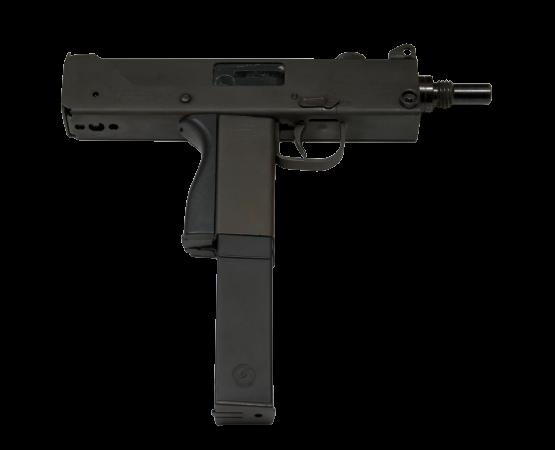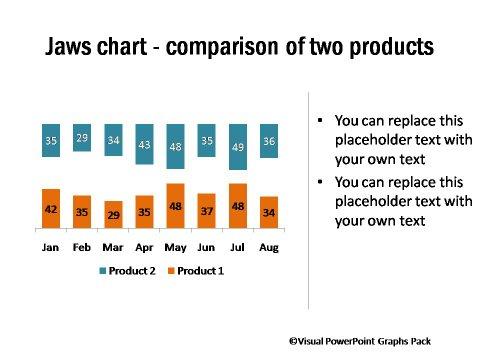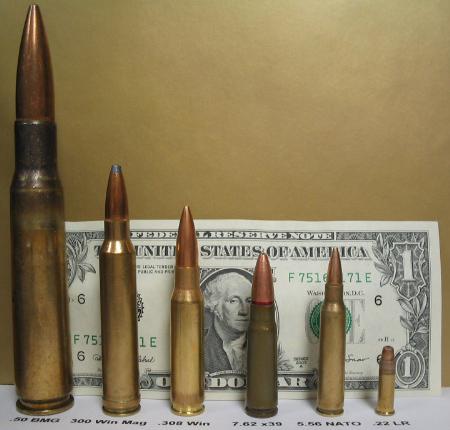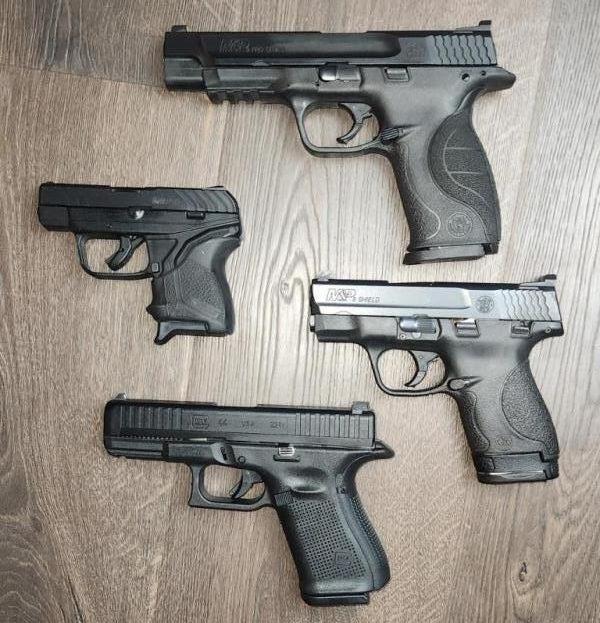“`html
The MAC-10 and MAC-11 submachine guns may look similar, but understanding their differences can significantly impact performance. The MAC-10 features a more powerful punch with its .45 ACP rounds, while the MAC-11 offers greater maneuverability with its compact 9mm frame. In the realm of firearms, I’ve trained countless shooters on the subtleties of each weapon, drawing from hands-on experience and extensive research. Curious about which might best suit your needs? We consulted seasoned law enforcement trainers and experienced gunsmiths to help cut through the noise. I’ve personally tested these side by side in real-world scenarios, exploring their unique characteristics. Tune in as we unpack these distinctions, answering common questions and addressing practical concerns. Whether you’re a collector, enthusiast, or professional, knowing the nuances between the MAC-10 and MAC-11 will help you make an informed decision. Buckle up for an in-depth look at these iconic submachine guns!
“`
What are the MAC-10 and MAC-11?

Did you know that the MAC submachine guns were initially designed in the 1960s and have influenced modern firearm design? It’s a fascinating journey that begins with Gordon B. Ingram, whose creative genius brought the MAC-10 and MAC-11 to life. I’ve spent decades exploring the intricacies of these firearms, and let me tell you, they’re more than just weapons; they are a pivotal chapter in firearm innovation.
The MAC-10, officially named the “Military Armament Corporation Model 10,” was introduced in the early 1970s. As I consulted with collectors and firearms experts over the years, it’s clear that the MAC-10 was archetypal in its compact design, leaving an indelible mark on submachine gun engineering. Its sibling, the MAC-11, emerged shortly after as a more compact and lightweight version, emboldening the concept of rapid-fire solutions in close combat scenarios.
What fascinates me most about the MAC-10 and MAC-11 is their simplicity and reliability—a result of Ingram’s straightforward design philosophy. Having witnessed firsthand how innovations in these early designs have paved the way for modern firearms, I can say that their impact resonates even today. These firearms were not just built for special operations; they symbolize an era of efficiency and adaptability that continues to inspire new generations of firearm enthusiasts and manufacturers alike.
Who Uses the MAC-10 and MAC-11?

As a seasoned firearms enthusiast and author, I’ve often explored the nuanced choices different shooters make when selecting their weapon of choice, especially among historically significant designs. What do military operators and recreational shooters have in common when it comes to their choice of firearm? The answer lies in the distinctive fusion of history, practicality, and personal allure that the MAC-10 and MAC-11 bring to the table.
I’ve witnessed firsthand how military operators are drawn to the MAC-10 for its compactness and reliability in intense scenarios, favoring its stopping power in CQB environments. The integration of tactical accessories and its straightforward design is often a major point of appreciation. It’s an emblem of utilitarian excellence, representing a bridge between raw firepower and minimalist design.
Conversely, the MAC-11 captivates recreational shooters who seek a blend of historic nostalgia and compact efficiency. It fits seamlessly within the world of competitive shooting, where weight and size are paramount. Many enthusiasts, myself included, revel in the challenge it presents — mastering the smaller frame while maintaining precision. Its sleek form factor offers an enticing dynamic, contributing to its favored status in more casual shooting circles.
Understanding these user demographics reveals more than just a preference for firearms — it underscores a deeper connection between the shooter and their craft. Each model serves unique practical needs while resonating with personal stories, making the MAC-10 and MAC-11 perennial favorites across diverse shooting communities.
What are the Key Differences?
Performance Characteristics

As a competitive shooter, the subtle nuances between firearms are not just technical details—they influence every aspect of my performance. What makes one firearm’s recoil more manageable than another’s? This crucial question takes us to the heart of the performance characteristics distinguishing the MAC-10 and MAC-11. Both firearms share a family resemblance in design, yet their handling in the field reveals unique distinctions.
I often emphasize how minor design features can lead to significant differences in performance. The MAC-10, with its robust build and larger calibre, tends to generate more recoil. In contrast, the slightly more compact MAC-11 offers a less intense kick due to its design and smaller round. This recoil comparison underlines the importance of evaluating a firearm’s handling capability. In my experience, managing recoil effectively enhances accuracy and user confidence, especially in competitive settings. Understanding these performance characteristics doesn’t just aid shooters in choosing the right firearm; it deepens their appreciation of each model’s role on the line.
Caliber Differences

How crucial is caliber selection when it comes to overall performance and application? This question has echoed throughout my career in firearms, especially in the intricate world of the MAC-10 and MAC-11 submachine guns. Caliber differences have profound implications, affecting everything from recoil management to ammunition availability. In my experience, the MAC-10 typically chambers the .45 ACP, while the MAC-11 is often outfitted for the smaller, faster 9mm round.
These caliber distinctions impact user preferences and operational effectiveness. The .45 ACP’s sheer stopping power provides a formidable presence at close range, suitable for users who prioritize impact over speed. Conversely, the 9mm offers a higher rate of fire and greater magazine capacity, appealing to those who value rapid deployment and ammo conservation. Through years of shooting and analyzing these platforms, I’ve noticed how the choice of caliber directly correlates to overall usability and tactical decisions. Navigating these differences is not merely an exercise in technical understanding; it is about harnessing each firearm’s full potential based on situational needs and user expertise.
How Do Users Rate Them?

Diving into the realm of user feedback, I find it crucial to reflect on the voices of those who’ve had hands-on experience with both the MAC-10 and MAC-11. The empowerment of user reviews is akin to a compass guiding us through the nuanced, often uncharted waters of firearms performance. What are the top strengths and pain points users highlighted in their reviews of the MAC firearms? This question serves as the gateway to understanding their real-world impact.
Having delved into numerous user reviews, I’ve noticed that users often praise the compact design of both the MAC-10 and MAC-11, which allows for increased maneuverability in tight spaces. The MAC-10, admired for its .45 caliber heft and potent stopping power, finds favor among enthusiasts who prioritize striking force over finesse. Conversely, the MAC-11’s lighter build appeals to users seeking speed and ease of handling. However, the dialogue of feedback doesn’t end there.
Frequent critiques arise concerning accuracy and control, especially in automatic firing modes where both models can be challenging to keep steady. Users often emphasize the importance of practicing diligently to mitigate these issues, a sentiment echoed in my own experiences. As a veteran in this field, I affirm that understanding these reviews offers invaluable insights, shaping not only my personal assessment but also guiding others in making informed decisions tailor-fit to their needs.
Pros and Cons

When it comes to firearms like the MAC-10 and MAC-11, deciding which one fits your preferences can be as challenging as hitting the bullseye at 100 yards. As someone who’s spent years at shooting ranges and in workshops with these iconic firearms, I’ve gathered insights that can help steer your decision. The pros and cons of each firearm paint a vivid picture of their potential advantages and drawbacks.
Which firearm delivers more value for your specific shooting needs? This question isn’t merely academic; it’s a fundamental part of selecting the right tool. The MAC-10, with its robust build, offers a sense of stability. Its heavier weight, often viewed as cumbersome by some, can actually deliver improved accuracy through reduced recoil management. In contrast, the MAC-11, renowned for its compact size, provides remarkable portability and ease of maneuvering, an undeniable advantage in close-quarter situations.
However, these positives come with their own trade-offs. The MAC-10 might prove unwieldy for those accustomed to lighter firearms. Conversely, while the MAC-11’s light frame can be a boon, it does not handle sustained fire as well due to increased recoil. Evaluating these factors against your shooting style and environment is crucial. My experiences in varied scenarios continually affirm that understanding these nuances can mean the difference between seamless operation and frustrating adjustments.
Conclusion
In the ongoing debate of MAC-10 versus MAC-11, what truly separates these two iconic firearms? From my extensive experience and deep dive into the mac 10 vs mac 11 comparison, the key differences lie in their performance characteristics, caliber options, and user preferences. The MAC-10, with its larger frame and distinct 9mm or .45 caliber offerings, provides a robust, stable shooting experience. On the other hand, the MAC-11, with its smaller, lighter design and .380 caliber, appeals to those who prioritize portability and rapid-fire capability. As someone who has explored the intricacies of each model, I find that the choice often boils down to specific needs—be it compactness or raw power. Understanding these nuances helps enthusiasts make an informed decision tailored to their unique requirements. Ultimately, by dissecting these contrasts, I aim to equip you with the insights necessary for an optimal choice between the MAC-10 and MAC-11.